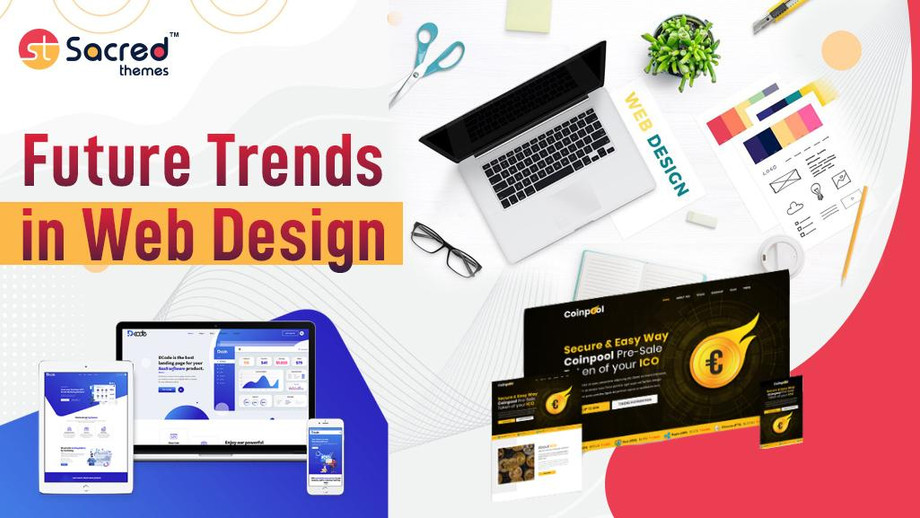Web design trends are constantly changing. It's not simply about a few new techniques or some new tools. New trends shift to a greater or lesser extent annually.
This means that those who would like to stay competitive must be familiar with them for at least two reasons: to be competitive in an ever-increasing market and to enhance their expertise in a constantly changing environment.
As you know, innovation is a key component of modern business. And if you are a business owner who uses digital marketing, it’s important to foresee these changes and adapt to them- so that you can keep up with the competition, and attract more customers.
The future of website design is changing rapidly and will continue to do so in the years to come. It is crucial that you stay abreast with the latest trends, which will enable you to develop an effective digital marketing strategy and attract new customers.
What is Web Design?
Web design is the process of designing, planning, and organizing online information. Today, the design of a website includes its complete operation in addition to its appearance. Web design also incorporates web apps, mobile apps, and user interface design.
Before discussing web design trends, first we examine the difference between web design and development.
Also Read: Difference Between Web Design and Web Development
Latest Trends in Web Design
Make consumer satisfaction the primary factor in determining design trends. Before and after making large design decisions, communicate alongside customers to ensure the modifications solve their concerns and improve the user experience (UX).
As you go through our list, think about which trends will give your users the most value and meet their specific needs.
- Single Page Website Design
Websites with only one page have been the easiest to use. One-page websites work well when their content is like a portfolio or a presentation of a single idea. These websites create the impression of reading a poster, as all the information is presented in one location without the need to navigate to multiple pages.
- Large-scale typography
This year has seen a rise in the popularity of a distinctive design style known as typography. Words and fonts that function as graphic elements at a specific size are in trend for minimalist designs. The text overlaps the image, creating the appropriate amount of contrast without being overpowering.
- Interactive font styles
Interactive fonts are the means through which text can be animated and made interactive through the hover state change. You can make more fancy effects with no-code platforms. Nonetheless, it is crucial to ensure that the characters are readable, as moving effects on characters can sometimes distract the user.
- Good motion design
Motion design that is responsible is starting to become more common. Since it is easy to go too far with motion web design, it can make people feel like they are moving. Therefore, parallax effects and mouse-driven scrolling must be limited during the design process. It is advisable to employ motion rather softly.
- Illustration using collage
The use of collage illustration can give a website an edge and make it more varied and creative. The selection of visual elements for the background layout is made simpler for graphic designers. Websites with a collage design typically incorporate the navigation and content directly into the scene.
- Abstract representation
The layout of abstract illustrations is given an organic texture and a sense of human touch. As the trends change, website owners are looking for abstract designs that feel natural and provide greater elegance. Using watercolor, ink effects, or textured paper can give the design a natural feel. Changes in line weight can also make the look and feel of a website softer.
- Gradients in the grains
The addition of grains to the gradient makes the design elements appear more contemporary and futuristic. It adds texture and looks like a photograph or a print. A large monochrome grain layout looks like a silk-screened poster, and the grain and gradients that are part of these designs can be used as a full background or across the whole page.
- Vector illustrations
Vector illustrations are a trend that designers can use to simply separate paragraphs, product galleries, and headings, or to generate a dynamic grid for websites. With this kind of layout, the line weight will affect how the final page looks. In these kinds of designs, the line weight will have a big effect on the final effect. The muted color palette and strike through mouse over effect create a pleasant atmosphere.
- Multi-window websites
The use of a split-screen layout is an intriguing example of an inventive method to break up a design. This design style provides natural content separation and visual appeal. It can also be used with a variety of movements and is an interesting approach to accentuating sections.

